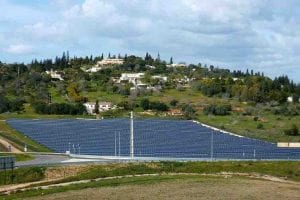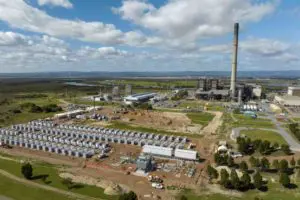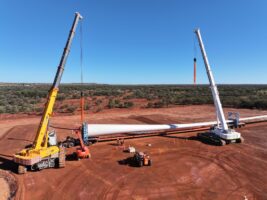Carnegie Clean Energy has deployed a demonstration of its wave powered barge concept, MoorPower, in waters offshore from the company’s headquarters in Fremantle, Western Australia.
MoorPower uses a version of Carnegie’s CETO technology to deliver clean and reliable electricity to offshore industries. The concept came out of the aquaculture industry, which still relies heavily on diesel.
The technology converts the orbital motion of waves into electricity, but rather than using a stand-alone buoy system, as with the CETO units, the scaled down technology is designed to be integrated with moored offshore vessels.
The $3.4 million WA demonstration project is being delivered in collaboration with a consortium of partners, including Huon Aquaculture and Tassal Group, and with $1.35 million in funding from the Tasmania-based Blue Economy Cooperative Research Centre.
The demonstration project aims to show how the technology works in a variety of sea conditions, ahead of a commercial rollout for aquaculture clients. Blue Economy CRC is a government-supported group that brings marine industries, government and researchers from 10 countries.
“The deployment of our MoorPower technology is a significant milestone in the challenge of decarbonising offshore operations, it is an important step in bringing our technology to the world,” said Carnegie Clean Energy CEO Jonathan Fiévez on Wednesday.
“We have listened to the needs of industry operating in isolated offshore environments and adapted our unique CETO technology to their requirements. MoorPower will reduce the requirement for fossil fuels, reduce carbon emissions, reduce risk and drive down cost.
“What we are learning from this demonstration deployment at our testing grounds off Fremantle will be critical to rolling this technology out to aquaculture and other marine industries,” he said.
John Whittington, the CEO of Blue Economy CRC says deployment of the demonstrator is testament to the group’s role in bringing together key technology developers.
“This technology advances Australia’s ocean energy capabilities and provides real-world solutions for
decarbonisation and a tangible pathway to net-zero,” he said.
Carnegies wave energy journey has navigated some rough seas, particularly in its home market, where it endured a short stint in voluntary administration in early 2019.
The company has since shifted the focus for development of its flagship CETO technology to Europe, where there is more policy support for ocean energy, including a target to install 100MW of capacity by 2025.
Last year, Carnegie beat 35 rivals to win €3,746,531 ($A6.3 million) to be part of a competitive program designed to bring wave power technologies to commercial deployment.
The funding will pay for a 400kW version of the CETO wave energy converter to be tested in waters off the Basque Country by 2025.










